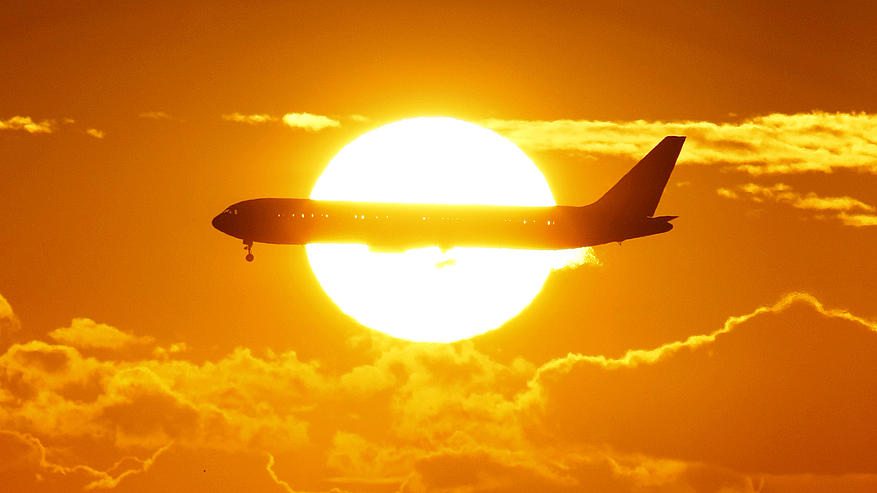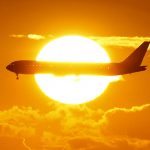This chapter was prepared in collaboration with ICAO and IATA and was reviewed by IATA’s medical advisory group.
The volume of air traffic has risen steeply in recent years. The number of long-distance flights has increased greatly, and the distance that planes can fly non-stop, and therefore the duration of flights, also continues to rise. The passenger capacity of long-distance aircraft is increasing, so that larger numbers of people travel aboard a single aircraft. Frequent travellers now form a substantial proportion of the travelling public. According to the International Civil Aviation Organization, the annual number of flight passengers exceeded 1562 million in 1999 and 1647 million in 2000.
Air travel, particularly long-distance travel, exposes passengers to a number of factors that may adversely affect their health and well-being. Passengers with pre-existing health problems may find that they are more susceptible to these factors. Health risks associated with air travel can be minimized if the traveller plans carefully and takes some simple precautions before, during, and after the flight. An explanation of the various factors that may affect the health and well-being of air travellers follows.
Cabin air pressure
Although aircraft cabins are pressurized, cabin air pressure at cruising altitude is lower than air pressure at sea level. At a typical cruising altitude of 11 000 metres (37 000 feet), air pressure in the cabin is equivalent to that at an altitude of 1500–2500 metres (5000–8000 feet) above sea level. As a consequence, the available oxygen is reduced and gases within the body expand. The effects of reduced cabin air pressure are usually well tolerated by healthy passengers.
Oxygen and hypoxia
During all stages of flight, cabin air contains ample oxygen for healthy passengers. However, because cabin air pressure is relatively low, the oxygen saturation of the blood is slightly reduced, leading to mild hypoxia (i.e. reduced supply of oxygen to the tissues). Passengers with cardiovascular or respiratory disease, or certain disorders of the blood such as anaemia or sickle cell disease, may not tolerate hypoxia well. Moreover, the effect of alcohol on the brain is increased by hypoxia.
Gas expansion
Air expands in all air-filled body cavities as a result of the reduced cabin air pressure. Abdominal gas expansion may cause moderate discomfort, which may be exacerbated by consumption of carbonated beverages and certain vegetables. As the aircraft ascends, air escapes from the middle ear and the sinuses, usually without causing problems. As the aircraft descends, air must be allowed to flow back into the middle ear and sinuses in order to equalize pressure differences (“clearing the ears”). Most discomfort can be alleviated by swallowing, chewing, or yawning; if the problem persists, forceful expiration against a closed nose and mouth will usually help. For infants, feeding or giving a pacifier to stimulate swallowing may reduce the symptoms.
People with ear, nose, and sinus infections should avoid flying because pain and injury may result from the inability to equalize pressure differences. If travel cannot be avoided and problems arise during flight, decongestant nasal drops may be helpful.
Individuals who have recently undergone certain types of surgery should not fly for a period of time because of possible damage resulting from gas expansion (see Contraindications for air travel).
Cabin humidity
The relative humidity in aircraft cabins is low, usually less than 20%. Low humidity may cause discomfort of the eyes, mouth, and nose but presents little risk to health. Discomfort can be alleviated by maintaining good fluid intake before and during the flight, using a skin-moisturizing lotion, using a saline nasal spray to moisturize the nasal passages, and wearing spectacles rather than contact lenses.
Dehydration
Measures should be taken to prevent dehydration during long flights. Fluid intake should consist of non-alcoholic beverages (water and fruit juices) both before and throughout the flight. As alcohol contributes to dehydration, consumption of alcohol should be restricted, and preferably avoided, before and during the flight.
Ozone and cosmic radiation
The concentration of ozone (triatomic oxygen, O3) and the intensity of cosmic radiation both increase with altitude. Ozone is easily converted to oxygen by heat and various catalytic processes. In modern jet aircraft, almost all ozone in the ambient air is converted to oxygen in the compressors that provide pressurized air for the cabin. During descent, when engine power is low, a build-up of ozone is prevented by catalytic converters. At usual cruising altitudes, the concentration of ozone in the cabin air is negligible.
Cosmic radiation is the sum of solar and galactic radiation. At aviation altitudes, the cosmic ray field consists of high energy-ionizing radiation and neutrons. The atmosphere and the earth’s magnetic field are natural shields. Because of the orientation of the magnetic field and the “flattening” of the atmosphere over the North and South Poles, cosmic radiation levels are significantly higher at polar than at equatorial latitudes. The intensity of cosmic radiation increases with altitude and dose rates of 1–3 µSv/hour on short haul routes and 5 µSv/hour on long haul routes are typical. For comparison, the natural background radiation from soil, water and building materials is about 2 mSv per year in most countries. The International Commission on Radiological Protection has set 1 mSv per year as a basic safety standard for the protection of the health of the general public against the dangers arising from additional ionizing radiation.
More From SolarStorms.org:
Submit your review | |








